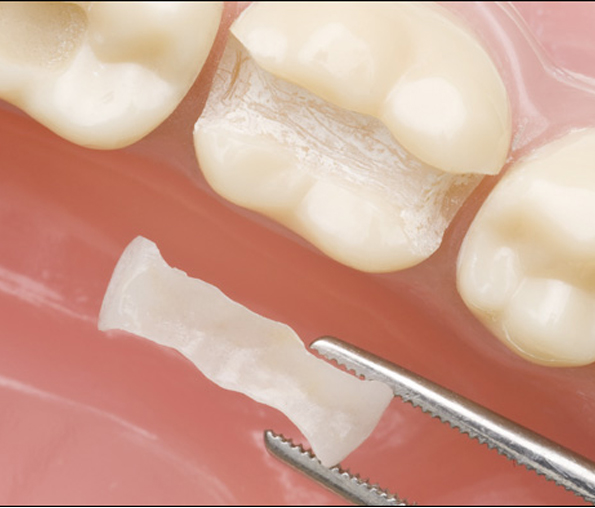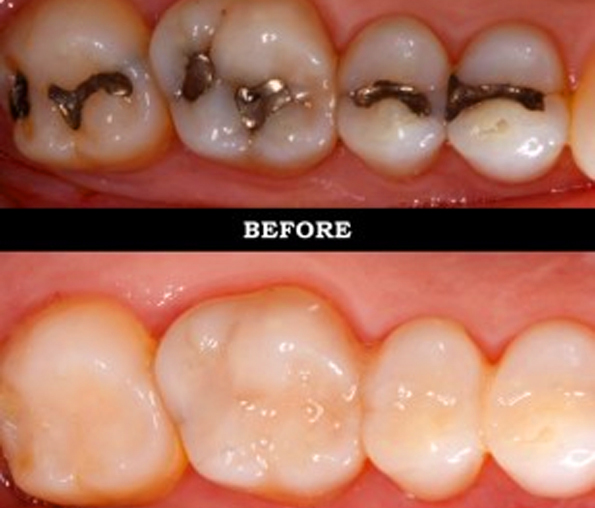Office Address
MEHTA CLINIC, Meeranangar, Shobhagpura, 100ft Road, Udaipur (Raj.) 313001

Filling and bonding are two essential dental procedures used to restore and repair teeth. Both aim to address various dental issues, such as cavities, cracks, chips, and gaps, ultimately improving the function, appearance, and overall health of teeth. These procedures involve different techniques and materials to restore the structure and integrity of teeth.
Dental fillings are commonly utilized to treat cavities caused by tooth decay. A cavity forms when bacteria in the mouth produce acid that gradually erodes the tooth enamel, resulting in a small hole or pit in the tooth. If left untreated, cavities can progress and cause further damage, leading to pain, infection, and even tooth loss.
a. Examination: The Dental Services examines the affected tooth visually and using dental instruments or X-rays to determine the extent of the decay.
b. Anesthesia: Local anesthesia is administered to numb the area around the affected tooth, ensuring
the patient remains comfortable during the procedure.
c. Removal of Decay: The decayed portion of the tooth is removed using a dental drill or laser,
leaving behind a clean and prepared area for the filling.
d. Filling Material Selection: Various filling materials are available, including amalgam
(metallic), composite resin (tooth-colored), porcelain, and glass ionomer. The choice of material
depends on factors like the location of the tooth, patient preference, and the extent of the
decay.
e. Filling Placement: The selected filling material is placed in the prepared cavity and shaped to
restore the tooth's original form and function.
f. Finishing: The filling is polished to ensure a smooth surface that aligns with the surrounding
teeth.
Each type of filling material has its advantages and considerations. For instance, amalgam fillings
are durable but more noticeable, while composite resin fillings blend with the natural tooth color
but may be less durable in certain situations.
Dental bonding is a versatile cosmetic dental procedure used to repair minor imperfections in teeth, such as chips, cracks, discoloration, and gaps. Unlike fillings that primarily address cavities, bonding focuses on enhancing the appearance of teeth.
a. Surface Preparation: The tooth surface is cleaned, and if necessary, a minimal amount of enamel
might be removed to ensure proper bonding.
b. Bonding Material Application: A tooth-colored composite resin, which matches the natural tooth
color, is applied to the prepared tooth surface.
c. Sculpting and Shaping: The Dental Services molds and sculpts the resin to achieve the desired shape,
ensuring it blends seamlessly with the natural tooth structure.
d. Curing: A special light or laser is used to harden the resin material, bonding it securely to the
tooth.
e. Finishing Touches: After the bonding material has hardened, the Dental Services further shapes and
polishes it to match the surrounding teeth, creating a natural appearance.
Dental bonding is a relatively quick and non-invasive procedure that can often be completed in a
single visit to the Dental Services's office. It provides an effective solution for minor aesthetic
concerns, improving the smile's overall appearance.
In summary, both dental filling and bonding play crucial roles in maintaining oral health and
enhancing the aesthetics of teeth. While fillings primarily address cavities and structural issues
caused by decay, bonding focuses on cosmetic improvements. These procedures, performed by qualified
dental professionals, contribute to restoring teeth functionally and aesthetically, promoting oral
health and overall well-being.
Get Your Quote Or Call: 9024868258

Dental fillings and bonding are essential procedures used to restore and repair teeth, addressing issues such as cavities, cracks, and chips. They play crucial roles in maintaining oral health and improving the appearance of teeth. However, many individuals wonder about the lifespan of these dental treatments and how long they can expect them to last.
The durability of dental fillings depends on various factors, including the type of filling material used, the location of the filling, oral hygiene practices, and individual habits. Here's a general overview of the lifespan of different types of fillings:
Amalgam Fillings: These metallic fillings have been used for decades and are known for their durability. They can last for 10 to 15 years or even longer with proper care. However, they are more noticeable than tooth-colored fillings.
Composite Resin Fillings: Tooth-colored composite fillings blend with the natural tooth color,
offering a more aesthetic solution. Their lifespan can range from 5 to 10 years. They might require
replacement over time due to wear and staining.
Porcelain and Glass Ionomer Fillings: These materials also have varying lifespans, with porcelain
fillings lasting similar to or longer than composite resin fillings. Glass ionomer fillings, often
used in specific situations, may have a shorter lifespan but offer unique benefits like fluoride
release.
The longevity of fillings can be influenced by factors such as chewing habits, teeth grinding
(bruxism), dietary choices, and oral hygiene practices. Regular dental check-ups allow Dental Services to
monitor the condition of fillings and recommend replacements if necessary.
Dental bonding is a cosmetic procedure used to repair minor imperfections in teeth, such as chips,
cracks, and discoloration. While bonding materials are durable, they might not last as long as some
types of fillings. The lifespan of dental bonding typically ranges from 5 to 10 years.
Similar to fillings, the longevity of dental bonding depends on several factors, including the
location of the bonding, oral habits, and proper care. Bonding material can chip or wear down over
time, especially if exposed to heavy biting forces or if the individual frequently consumes staining
substances like coffee, tea, or tobacco.
To extend the lifespan of dental fillings and bonding, practicing good oral hygiene is crucial. This
includes regular brushing, flossing, and visiting the Dental Services for routine check-ups and cleanings.
Additionally, avoiding habits like teeth grinding, biting hard objects, and consuming excessive
amounts of staining substances can help preserve the integrity of dental restorations.
In conclusion, while the lifespan of dental fillings and bonding varies depending on several
factors, both treatments can provide effective solutions for restoring teeth and improving smiles.
By following proper oral care practices and seeking professional dental guidance, individuals can
ensure the longevity of their dental restorations, promoting oral health and overall well-being.
Root canal treatment, or endodontic therapy, saves infected teeth by removing damaged pulp, cleansing the tooth, and sealing it.
Read MoreDental implants use titanium posts in the jawbone for durable, natural-looking replacement teeth or bridges.
Read MoreCrowns and bridges enhance smiles by covering damaged or missing teeth, and improving appearance,confidence.
Read More"Smile designing improves appearance via whitening, veneers, orthodontics, aligning with facial features, enhancing confidence, and personality."
Read More"Teeth whitening removes stains, restores brightness, enhances aesthetics, and boosts self-confidence."
Read More"Routine teeth cleaning removes plaque, tartar, stains, preserving oral health, preventing gum disease, and refreshing smiles."
Read More"Fillings repair cavities, bondings fix chips/gaps, enhancing tooth function, aesthetics for a natural, durable smile."
Read MoreMEHTA CLINIC, Meeranangar, Shobhagpura, 100ft Road, Udaipur (Raj.) 313001


